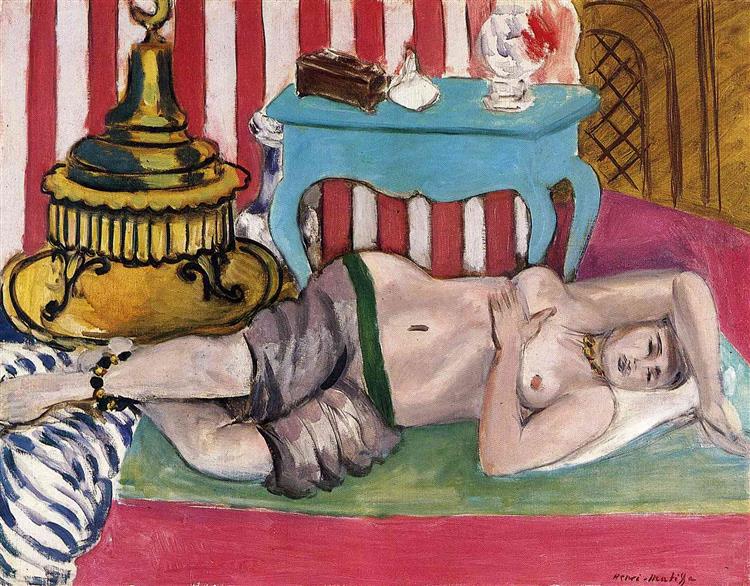Description
The painting "Odalisque with Green Scarf" by Henri Matisse, created in 1926, is one of the most representative pieces of the late Fauvism period, a movement of which Matisse was one of the main exponents. In this work, we observe a reclining odalisque that, however, evokes sensations of calm and serenity, far from any type of explicit eroticism. The central figure, a woman with a green scarf wrapped around her head, is presented in a relaxed pose, with her gaze directed into the distance, giving her an air of introspection and stillness.
One of the most striking aspects of this painting is the rich color palette employed by Matisse. The warm tones of the odalisque's naked body contrast and complement the vibrant colors of the surrounding environment. The use of green, both in the scarf and in the vegetation that seems to envelop her, adds a freshness that contrasts with the warm and pinkish tones of the skin. This mastery in the combination of colors is a distinctive hallmark of the artist and refers to his interest in exploring chromatic harmony beyond naturalistic representations.
The composition of the work is structured so that the figure of the odalisque becomes the focal point that attracts the viewer's gaze. However, Matisse does not limit himself to exalting the human figure; the surrounding environment, although sketched with rather simple strokes, suggests a richly decorated interior space, in which oriental patterns combine with vegetal elements. This highlights his fascination with the cultures of North Africa and the Middle East, themes to which he returned repeatedly throughout his career.
It is particularly interesting to see how Matisse plays with perspective and spatiality in this work. The planes seem to interlace in an almost two-dimensional manner, giving it a more graphic and ornamental character. This technique echoes his experiments with cut-out paper and other techniques that he would develop more intensively in later decades. The figure of the odalisque, although predominant, is integrated into a scene that invites contemplation of each detail, from the curve of an object to the texture of a wall.
The "Odalisque with Green Scarf" also has clear connections with other works by Matisse that explored similar themes; for example, his series of odalisques, exotic female models that represented beauty but also served as a means to explore decoration, space, and figure. In this vein, "Odalisque with Red Pants" (1921) and "Odalisque with Magnolias" (1923) are works that share a close sensitivity in terms of composition and color treatment.
Through the "Odalisque with Green Scarf," Matisse not only offers us a window into an orientalist dream world but also a lesson on how color and form can be used to convey deep emotional states. In this work, the fauvist master leaves us an indelible legacy that encompasses both his personal and artistic concerns, consolidating his position as a titan in the history of modern art.

